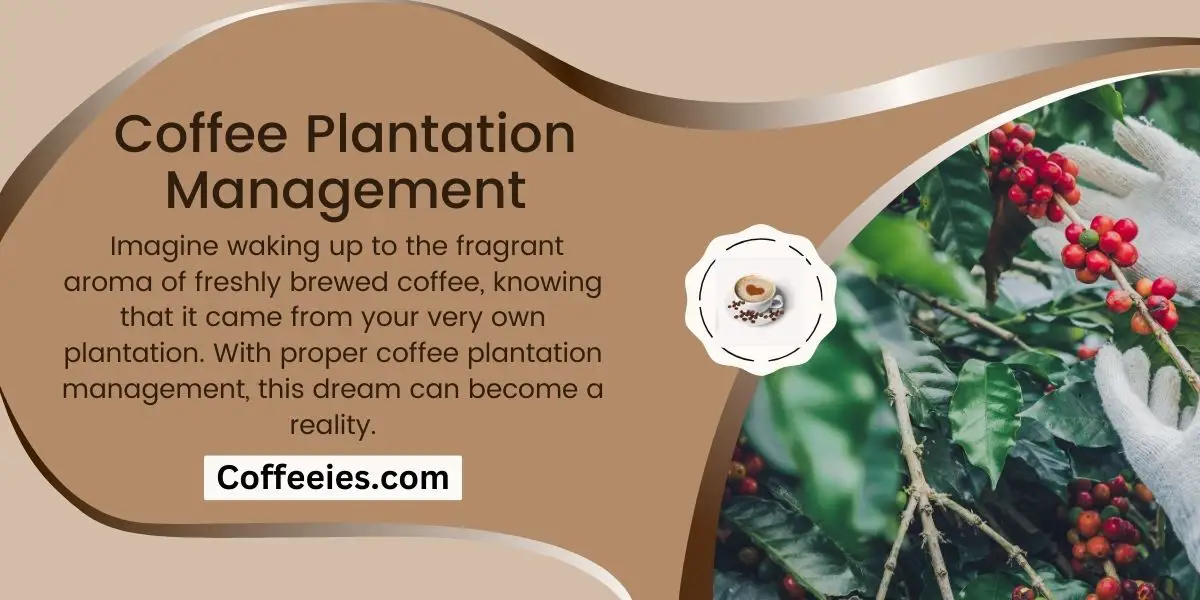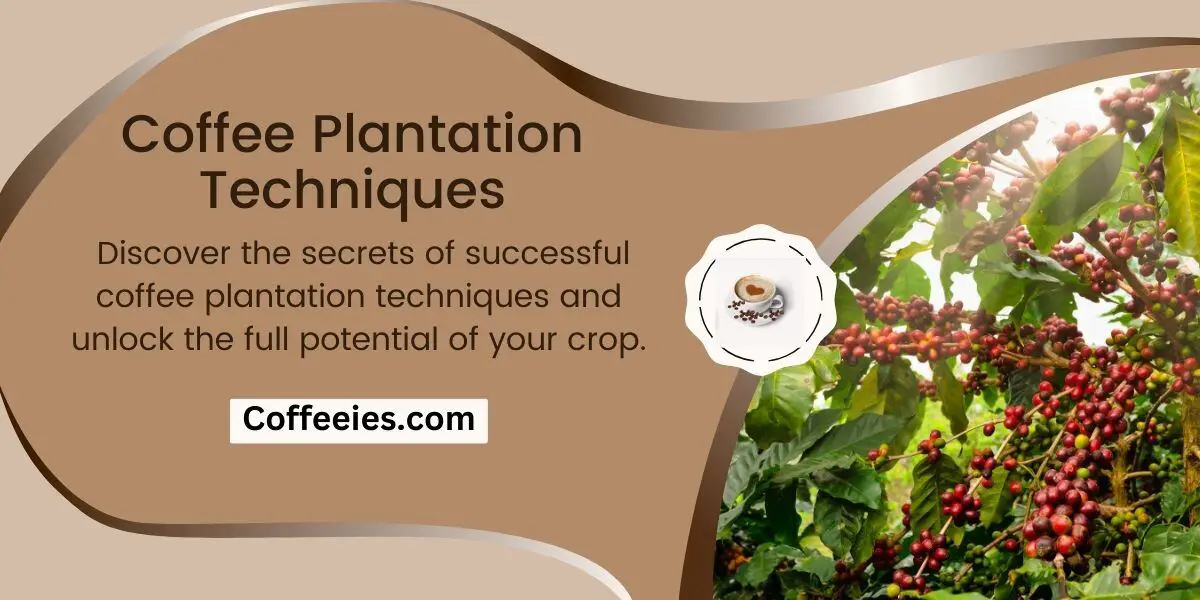Imagine waking up to the fragrant aroma of freshly brewed coffee, knowing that it came from your very own plantation. With proper coffee plantation management, this dream can become a reality.
By analyzing the soil, selecting the right coffee varieties, and implementing sustainable farming practices, you can ensure optimal growth and maximize yield.
In this article, we will explore the strategies and techniques that can help you create a thriving coffee plantation. So grab a cup of joe and let’s dive in!
Summary
- Soil analysis is essential for making informed decisions about fertilizers and soil amendments to ensure the health and productivity of the coffee plantation.
- Selecting coffee varieties that are adaptable to the climate and have disease resistance is crucial for the success of the plantation and the production of high-quality beans.
- Pruning and training techniques help maintain plant health and productivity by removing dead or diseased branches and guiding growth.
- Effective pest and disease management through monitoring, preventive measures, and biological controls is vital to ensure the health and productivity of the crops.
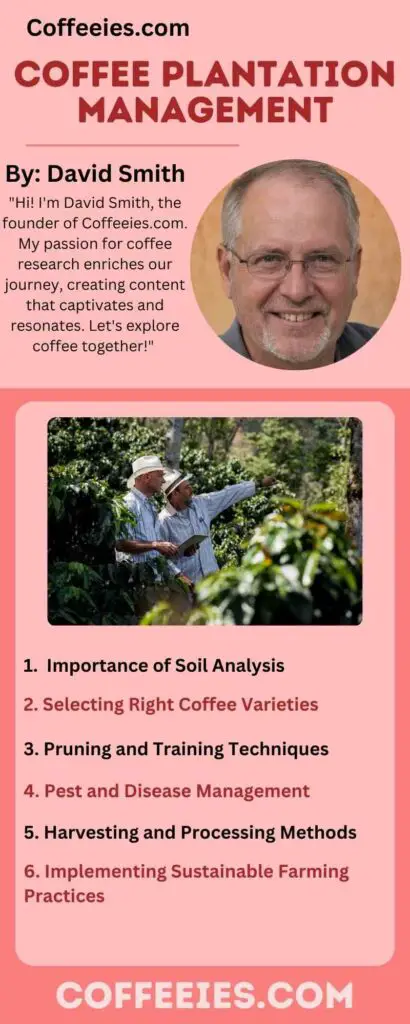
The Importance of Soil Analysis
You should start by checking out the soil analysis report for your coffee plantation. Understanding the composition of the soil is crucial for the successful management of your plantation.
The soil analysis report provides valuable information about the nutrient levels, pH balance, and organic matter content in the soil.
By knowing this, you can make informed decisions about fertilizers and soil amendments, ensuring that your coffee plants receive the necessary nutrients for optimal growth.
Additionally, the soil analysis report can help you identify any deficiencies or imbalances that may be affecting the health of your plants.
By addressing these issues, you can prevent diseases and improve the overall productivity of your coffee plantation.
So, take the time to review the soil analysis report and use it as a guide for implementing effective soil management practices.
Selecting the Right Coffee Varieties
When choosing the right coffee varieties for your plantation, it’s important to consider both the taste preferences of your target market and the climate conditions in your region.
By selecting the right coffee varieties, you can ensure that your plantation thrives and produces high-quality beans that meet the demands of your customers.
Here are three factors to consider when making your selection:
- Climate adaptability: Choose varieties that are well-suited to the temperature, rainfall, and altitude of your region. This will help your coffee plants withstand environmental stress and produce optimal yields.
- Flavor profiles: Consider the taste preferences of your target market. Some varieties are known for their bold and intense flavors, while others offer more delicate and nuanced profiles. Selecting the right flavor profile will help you cater to the preferences of your customers.
- Disease resistance: Look for coffee varieties that are resistant to common diseases in your area. This will help you minimize the risk of crop loss and ensure the long-term success of your plantation.
Pruning and Training Techniques for Optimal Growth
To promote optimal growth, prune your coffee plants regularly and use training techniques to shape their growth.
Pruning is essential for maintaining the health and productivity of your coffee plants.
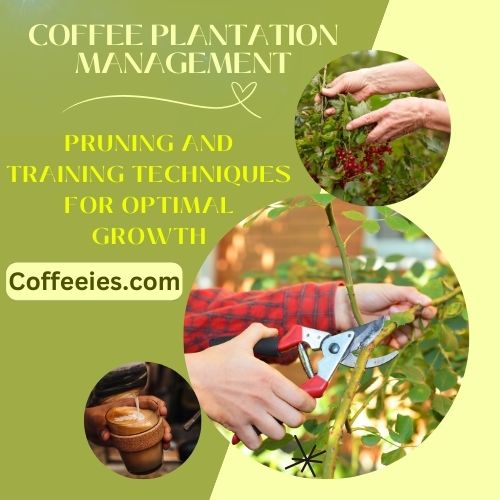
Make sure to prune during the dormant season, when the plants are not actively growing. This will minimize stress and allow the plants to allocate energy towards new growth.
Additionally, training techniques such as trellising or staking can help guide the growth of your coffee plants.
By providing support and structure, you can prevent the plants from sprawling and ensure that they grow in a more organized and manageable manner.
Coffee Plantation Management: Pest and Disease Management Strategies
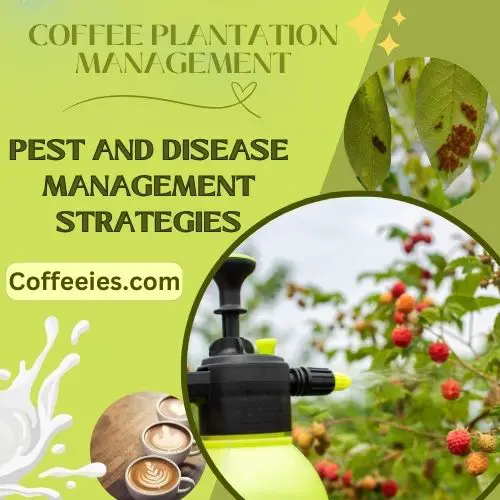
Implementing effective pest and disease management strategies is crucial for the success of your coffee plantation. To ensure the health and productivity of your crops, consider the following strategies:
- Regular monitoring of your plantation for signs of pests and diseases.
- Implementing preventive measures such as proper sanitation and hygiene practices.
- Utilizing biological controls and integrated pest management techniques to minimize the use of chemical pesticides.
Harvesting and Processing Methods
Happy Farm YouTube Channel
Once you’ve implemented the appropriate pest and disease management strategies, it’s time to focus on the harvesting and processing methods for your coffee plantation.
Harvesting is a crucial step in ensuring the quality of your coffee beans. You can choose between two main methods: handpicking or strip picking.
- Handpicking involves selectively harvesting only the ripe cherries, which requires skilled labor but results in higher-quality beans.
- Strip picking, on the other hand, involves stripping all the cherries from the branch, regardless of their ripeness.
After harvesting, the coffee cherries need to be processed. There are two common processing methods: the dry method and the wet method.
The dry method involves drying the cherries in the sun, while the wet method involves removing the outer skin and pulp before drying.
Choosing the right harvesting and processing methods will ultimately impact the flavor and quality of your coffee beans.
Implementing Sustainable Farming Practices
You can start implementing sustainable farming practices by prioritizing soil conservation and water management on your coffee plantation.
By adopting these practices, you can ensure the long-term health and productivity of your plantation while minimizing environmental impact.
Here are three key strategies to consider:
- Compost and Mulch: Utilize organic materials such as coffee pulp and plant residues to create compost, which enriches the soil and promotes nutrient cycling. Additionally, apply mulch to retain moisture, suppress weed growth, and prevent erosion.
- Water-efficient irrigation: Implement drip irrigation systems that deliver water directly to the plant roots, minimizing water wastage and reducing the risk of disease. By scheduling irrigation based on plant needs and monitoring soil moisture levels, you can optimize water usage.
- Agroforestry: Integrate shade trees and other crops within your plantation to enhance biodiversity, control pests, and improve soil fertility. This approach creates a balanced ecosystem that supports the health of your coffee plants.
Maximizing Yield Through Efficient Post-Harvest Processing
To maximize your yield, focus on efficient post-harvest processing by carefully handling and processing the harvested coffee cherries.
After the cherries are picked, they should be sorted to remove any damaged or unripe ones. Then, they should be washed to remove any dirt or debris.
This can be done using clean water or specialized equipment like pulpers or washing machines. Once the cherries are clean, they need to be dried properly.
This can be done by spreading them out on drying beds or using mechanical dryers. It is important to ensure that the cherries are dried evenly and thoroughly to prevent mold or fermentation.
Finally, the dried cherries can be hulled to remove the outer layer and reveal the green coffee beans inside. By following these steps, you can maximize your yield and produce high-quality coffee.
Frequently Asked Questions
1. What Are the Best Irrigation Methods for Coffee Plantations?
The best irrigation methods for coffee plantations depend on factors such as climate, soil type, and water availability. Consider drip irrigation, sprinkler systems, or a combination of both to ensure optimal water distribution for your coffee plants.
2. How Can Coffee Farmers Prevent Soil Erosion?
To prevent soil erosion on your coffee farm, be the guardian of your land. Implement techniques such as contour planting, mulching, and terracing. These methods act as armor, protecting your precious soil from the relentless forces of nature.
3. What Measures Can Be Taken to Control Weeds in Coffee Plantations?
To control weeds in your coffee plantation, you can implement measures such as regular weeding, mulching, and the use of herbicides. These methods will help prevent weed growth and ensure the health of your coffee plants.
4. How Can Coffee Farmers Protect Their Crops From Common Pests and Diseases?
To protect your coffee crops from common pests and diseases, you should regularly monitor and inspect your plants for any signs of infestation. Implementing proper sanitation practices, using organic pesticides, and encouraging beneficial insects can also help safeguard your crops.
5. What Are the Key Factors to Consider When Determining the Optimal Time for Coffee Harvesting?
When determining the optimal time for coffee harvesting, you should consider factors like the maturity of the coffee cherries, weather conditions, and the desired flavor profile. Harvesting at the right time ensures quality beans.
Conclusion
Congratulations! You’ve now mastered the art of coffee plantation management.
By implementing sustainable farming practices and using efficient post-harvest processing techniques, you’ll be able to maximize your yield and produce high-quality coffee beans.
Remember, the key is to always stay ahead of pests and diseases, select the right coffee varieties, and maintain optimal soil conditions.
So, grab your cup of joe and embark on this exciting journey to become a coffee connoisseur! Let’s brew some success together!
Resources Used For Research
- Soil erosion under different management of coffee plantations in the Venezuelan Andes
- Landscape and crop management strategies to conserve pollination services and increase yields in tropical coffee farms
- Soil organic matter quality and weed diversity in coffee plantation area submitted to weed control and cover crops management
- Journal of Integrated Pest Management
- Effects of crop management patterns on coffee rust epidemics

